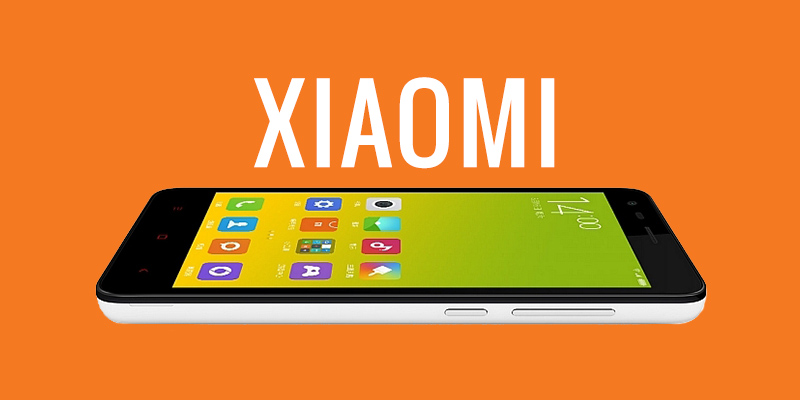[TC-I Changemakers] An interview with Shabnam Aggarwal of MILLEE
Wednesday March 10, 2010 , 12 min Read
Editor’s note: The ThinkChange India staff is committed to providing our readers with interviews of people we believe are at the brink of something special but have for the most part been overlooked by the mainstream media. Readers will be able to see other conversations under our TC-I Changemakers tag.

In this edition, TCI-changemaker focuses on MILLEE, a non-profit organization focusing on spreading literacy to under-privileged children using mobile phone games. Badhri met Shabnam Aggarwal, Project Manager and Co-founder of MILLEE to find out more about the organization, its work and its future plans. (Shabnam Aggarwal’s answers are not verbatim) How did you get to be associated with MILLEE?
MILLEE initially started as a research project in University of California, Berkeley carried out by Dr. Matthew Kam (then PhD candidate) to find the efficacy of cell phones in spreading literacy. During his research, he spent some time in India. At the end of the research project, he took up a job as a professor at Carnegie Mellon University. So he was looking for a social entrepreneur who wanted to work in India and be his project manager on the ground running the pilot and doing some fund raising. That is where I came in. At that time I was in Cambodia working for Digital Divide Data.While in Cambodia, I developed a program to impart English literacy skills to young women rescued from brothels. I was looking to come to India, I knew I wanted to work on education and I wanted to work with mobile phones since I have prior experience with mobile phone solutions during my tenure as an intern at Microsoft Research India. MILLEE really satisfied all the three criteria. So, from September 2009, I started working full time for MILLEE as the project manager and co-founder of MILLEE.
If I understand correctly, MILLEE’s primary focus is on the software games that go into the mobile phone….?
MILLEE as a team develops an end-to-end solution with respect to providing literacy using a mobile phone. We do the research on our target population, then we develop storyboards for the kinds of games we want to develop and then develop the games themselves. We primarily work with government schools so it makes sense for us to follow the Andhra Pradesh State curriculum while we are here in Andhra Pradesh. So we go through the complete spectrum starting from piloting to deployment. Nokia donated 450 cellphones as well as some money to run one year of piloting.
What is the current stage of the project now? Is it in the piloting stage or have you gone into full-fledged commercialization?
We are not at the commercialization stage quite yet. I would say that we are at the end of the piloting stage. We have piloted this project for six years already but since we are very academically focused and human-centered we take a target population like the children we work with and try to figure out what they need and then cater our design around that. So ours is a very iterative process and specific to a target population. That is why it has taken us many years in piloting. But I do hope that we attain commercialization next year.
To understand a little bit more about the product, you work on a game that helps to learn English. After playing the game, say for a month, what do the students learn? A bunch of words?… how to speak…?
We focus on standard five of the Andhra Pradesh curriculum, where the main focus is vocabulary. By the time the students reach std. five they should have learnt phonetics and pronunciation. But I have gone to a lot of schools in India and conducted baseline test for English and Telugu literacy, from which I find that there is a wide range range of students …
…meaning there can be students in say, 8th or 9th standard who don’t know how to pronounce….?
…right. So, we follow the Andhra Pradesh state syllabus and develop about ten lesson plans for one unit. Each lesson plan may normally take a couple of days for a child to learn and hopefully at the end of one month the child would have learnt one unit which may teach about 10 to 20 different vocabulary words. We also try to teach them frequently used words like “of”, “an’, “the” – words that you don’t have pictures for, by including them in stories and games. So when they read the story or play a game, they can hear the audio while looking at the word and learn how to use it.
Now that you have 450 cell phones with your games, do you approach schools directly? How do you bring the product to the students? How do you ensure that all the students who receive these cell phones are actually playing the games and learning?
We approach NGOs who have partnerships and established relationships with schools. Right now we work in close relationship with Byrraju foundation which has taken up a lot of different schools in villages all over Andhra Pradesh. We work in East Godavari, where the foundation has completely taken over villages and transformed them. So the villagers, the conveners and panchayats respect them very much. So when Byrraju foundation recommended MILLEE, they readily accepted it.
About your second question, in the pilot that is coming up we give the phones to students during school hours and they play for an hour, while we watch, ask a few questions and take notes and videos. But we have done a pilot earlier in January 2009 which was more of an uncontrolled experiment in which we just gave them the phone and let them play when they find time. The phones were really powerful in that they can keep logs about everything that is done on the phone. When we get the phone back, by looking at the logs we understand how many words they learn in a week. It was interesting to find that a lot of kids play after hours and teach each other. There was one kid who came out as the “leader” too. (Laughs)
…and how do you find out how much they have learnt?
We have a baseline test in the beginning, followed by a test once every month or two. We also have end-term tests that run at the end of the year. During the tests we give a bunch of cards and ask the student to read them, or show them some pictures and identify if they are able to verbalize them. The idea is to make the tests as simple as possible.
We have a controlled pilot coming up in which on one hand we only administer baseline, midterm, and endline tests on a group of 400 village school students learning English the normal teacher-student method, and on the other we have a group of 400 students who learn English only with MILLEE games. So, now we have an opportunity to compare and find out how much both the groups learn using the different methods of learning.
Using the cell phone games, they learn to read and speak. But how do they learn to write?
For the pilot we are developing a workbook that goes along with the games that they can use to learn writing. But it is not feasible to hand over workbooks with our games when we commercialize. So, from that perspective, we currently have one game which has an animation of a pencil that writes different alphabets. This would help students to understand the manner in which the alphabets are written. As far as writing grammar and more advanced English, we haven’t got there yet (laughs…)
For a low-income family, a cell phone can be a prized possession and off-limits to children. How do you think your initiative can get past that hurdle?
For this initiative to be a success, parents should be convinced that when the children play the game- they are learning. So, for commercialization, we are planning to give a few games free along with the cell phone. That way when the children do get to play the games, their parents would hopefully realize that they are learning, For the pilot though, the parents are included from the beginning. We get their consent for the students to play. But we are also thinking about getting the parents to learn along with the child. That would be great because now the entire family is learning. But right now our main focus is on the students.
Do you think that this way of learning would be better than a person teaching?
Never. Our goal is not to replace the teacher with the technology. I strongly believe that a person is definitely a better teacher as long as the person is well educated. However, in large parts of India, especially rural areas, there is no proper training system for teachers to learn new methods of teaching. Most of the government schools and even a lot of affordable private schools don’t have formally trained teachers. I think that is where this technology would help.
How do compare your product with other technology-based educational initiatives like One Laptop Per Child or XOXO?
I think they are all very valiant projects, and computers are obviously very powerful. But I think a computer can be a completely foreign object to the students. However, every single child I have spoken to has at least seen a mobile phone with someone in the community and most of them have even played with it. So, I think learning through cell phones is a more indigenous approach.
When you commercialize, what would be your business model for generating money?
We are planning on an “iPhone” like model, where we give a set of games free along with the cell phones; It may be prepackaged into the cell phone or be available as a free download. The subsequent games may be purchased for a nominal fee, say, Rs. 20/- per game. Our goal is to stay focused at the the bottom of the pyramid (BoP), but we can also tap into the next billion in which people have expendable income so that we can make our business more self-sustainable. However, from our research, we understand that even those who are in the BoP allocate a portion of their little income to education when they understand its value for their family. So, our business plan is to really stay focused on the BoP, while ensuring self-sustainability so that we don’t have to keep looking for funding. In addition, this way we empower the customer to value the games they have purchased.
From our conversation so far, I understand that you work with NGOs to reach out to students and with companies like Nokia in the technology front. Is there any other category of organizations that you work with, but haven’t talked about yet?
One group I haven’t mentioned is the group of college undergraduate students. As I mentioned earlier, we would like to make our design as indigenous and human-centered as possible. With that in mind, we went to IIIT-Hyderabad last year and talked to undergrads about our approach to designing a new game and how to develop the games themselves. We found that the students have come up with really cool ideas for games that relate to every day life of students, like riding an auto-rickshaw and running over a right word etc. So, that is one group we like to work closely with. When they graduate they have the opportunity of working locally with MILLEE in India or to go abroad to Carnegie for an internship. There is also a possibility for the students to intern with companies that we partner with. So, the students do have a lot of incentives for working with us.
Great! Now what are your plans for the next year or two?
For the whole of next year we will do the controlled piloting that I talked about earlier with 400 MILLEE students and 400 village students going through conventional schooling. After that, we would like to expand MILLEE into other Indian cities. Since the project should have a home-grown approach, we will incorporate local state curriculum into our games. We are also looking at the possibility of partnerships with other NGOs like Pratham or Naandi Foundation that work on education at the national level and see how we can build into each others’ space.
Finally, how can a common man like me who has a full-time job, but can afford to spend some time for social causes help you?
I have had a lot of people come and tell me that they want to get involved in MILLEE’s efforts and wanted to know how they can contribute. It is really great, but I think the best thing they can do is to tell me what their strengths are, because if I ask them to make a video game and if they don’t know how to do it, it’s not going to work right? But as far as what I need is concerned, I need to raise funds for the project. Given that we focus on the BoP, I feel why should we raise money from the people who are in the middle and upper classes? If I can somehow reach out to people at the BoP and sell the project idea to them, even if they donate Rs.10/- each it would be a great way to generate funding. But it is really hard to reach them and I need people who can give ideas on doing that. Further for the piloting itself, I need people who can be field operators and curriculum developers etc. So we do have a lot of requirements, and would like to hear from interested people about how they can contribute.










